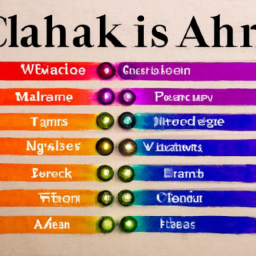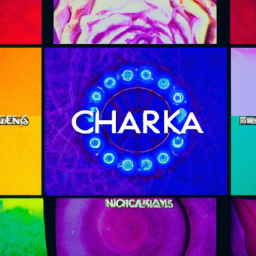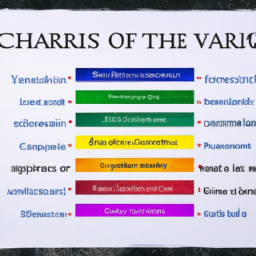Chakras, also known as energy centers in the body, have been an integral part of traditional eastern medicine and belief systems for centuries. Derived from the Sanskrit word meaning “wheel,” chakras are believed to be spinning wheels of energy that correspond to different organs and glands in the body. In this article, we will explore the seven main chakras and their significance in maintaining physical, mental, and emotional well-being.
Root Chakra:
The root chakra, also known as Muladhara in Sanskrit, is located at the base of the spine and is associated with the color red. It is believed to govern our basic survival needs and primal instincts. A balanced root chakra provides a strong foundation for physical and emotional stability, the ability to manage fear and anxiety, and a sense of security in our surroundings.
Sacral Chakra:
Located in the lower abdomen, the sacral chakra, also known as Svadhisthana, is linked to the color orange and is associated with creativity, sexuality, and pleasure. A balanced sacral chakra allows one to express emotions, experience intimacy, and explore their creativity freely.
Solar Plexus Chakra:
The solar plexus chakra, also known as Manipura, is located above the navel and is represented by the color yellow. It is known as the center of personal power, self-esteem, and willpower. A balanced solar plexus chakra allows one to overcome self-doubt, set healthy boundaries, and make confident decisions.
Heart Chakra:
Located in the center of the chest, the heart chakra, also known as Anahata, is associated with the color green. It is the center of love, compassion, and connection. A balanced heart chakra enables us to give and receive love freely, nurture healthy relationships, and have empathy for others.
Throat Chakra:
The throat chakra, also known as Vishuddha, is located in the throat and is represented by the color blue. It is the center of communication, self-expression, and truth. A balanced throat chakra allows one to express themselves clearly, listen actively, and speak their truth confidently.
Third Eye Chakra:
Located in the center of the forehead, the third eye chakra, also known as Ajna, is associated with the color indigo. It is known as the center of intuition, wisdom, and spiritual awareness. A balanced third eye chakra enables us to trust our instincts, cultivate inner wisdom, and have a deeper understanding of our purpose in life.
Crown Chakra:
The crown chakra, also known as Sahasrara, is located at the top of the head and is associated with the color violet. It is known as the center of spirituality, consciousness, and enlightenment. A balanced crown chakra allows us to connect with our higher self, experience spiritual awakening, and have a sense of oneness with the universe.
Understanding and working with chakras can help us achieve balance and harmony in our physical, emotional, and spiritual selves. When one or more chakras are out of balance, it can lead to physical ailments, emotional distress, and spiritual disconnectedness. Practicing yoga, meditation, chanting, and using healing crystals are some ways to help balance the chakras and maintain overall well-being.
In conclusion, chakras are an important aspect of our existence, and understanding them can help us achieve a state of holistic well-being. By incorporating mindful practices into our daily lives, we can work towards balancing our chakras and lead a happier, healthier life. So, take some time to reflect on your chakras, and see how you can incorporate practices that resonate with your energy centers.





Great explanation of the 7 chakras
ChrisRouse: Everyone should take the time to learn about chakras!
An enlightening journey into understanding your inner energy – understanding the chakras can open up a world of possibilities, and help to provide balance and inner peace.
Absolutely! Learning about the chakras can be a powerful and transformative experience.